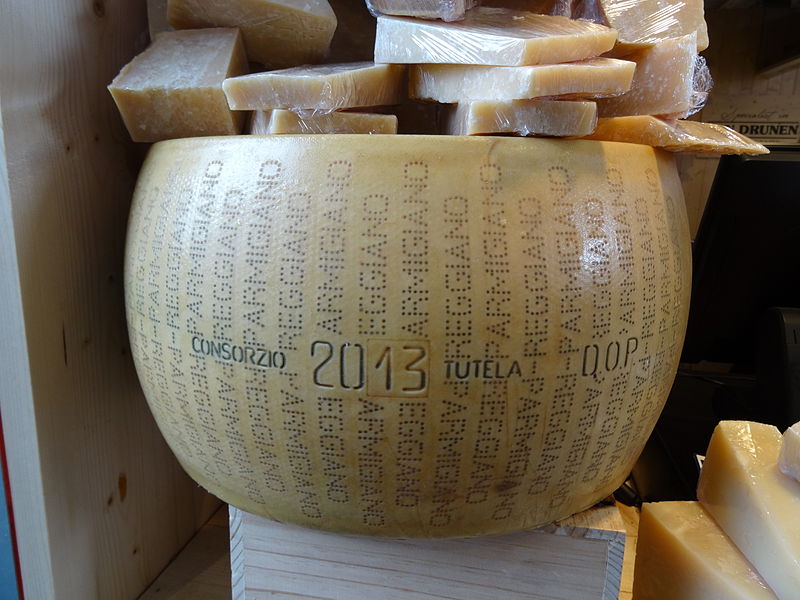I love Parmesan cheese. Not so much the kind in the green plastic bottle, but shaved or shredded or in chunks. It’s often difficult to trace the history of specific foods, but this was easier than I imagined.
- Roughly 900 years ago, Parmesan cheese was created by Benedictine and Cisterian monks in the Parma region of Italy.
- It was created to be nutritious and to last a long time.
- A cow’s diet affects the taste of their milk. The cows’ diet in this region of Italy is what leads to the distinctive flavor of this cheese.
- Parmesan is French for “from Parma”. In Italy, they call it Parmigiano, which also means “from Parma”.
- The first known written record of Parmesan is a deed from 1254 that mentions the cheese by its Latin name “caseus parmensis”.
- There is an entry in a purchasing ledger in 1344 for Parmigiano.
- Although the equipment has been updated, the basic production process is the same as it has been for almost nine centuries.

A print advertisement for Parmigiano-Reggiano from 1930. Photo: Musei del cibo via Wikimedia Commons
- The European Union (EU) has something called the Protected Denomination of Origin (PDO) designation. This means that a product is protected under their name, which often includes a location (think Black Forest Ham or Cornish Pasty). Within the EU, since 1996, the only ones who can sell Parmigiano-Reggiano, or Parmesan, cheese is the Consorzio del Parmigiano Reggiano.
- This PDO protected status means that you can trust the quality of the cheese. It guarantees that the cheese is always made with the same ingredients and the same process in the same region. The cheese producers must follow a set of Rules of Production to ensure quality.
- PDO rules do not apply in the U.S. As you know from the green container, just because the label says “Parmesan” doesn’t mean that any quality control was applied to guarantee the flavor or the process.
- Parmigiano-Reggiano can’t be sold before it is 12 months old, but the ideal maturation period is 24 months.
- The best milk is from cows in the first 100 days after calving.
- When Parmigiano-Reggiano is cut into wedges for retail sale, it is required to include some of the inedible rind, which bears the trademark that guarantees it is genuine Parmigiano-Reggiano.
- A rigorous inspection must be passed before the wheels of cheese can be trademarked.
- Each wheel of cheese, which is aged on wooden shelves, weighs almost 90 pounds.
I don’t know if I’ve ever had “real” Parmesan cheese. The stuff I had for lunch today was a U.S. brand.It was good, but now I’m not sure it was good enough.
I want to try the real stuff, the original. I want to taste Parmesan cheese made using the same recipe and process that has been used for centuries. It’s like a taste of history. I guess it’s time for a trip to Italy.

